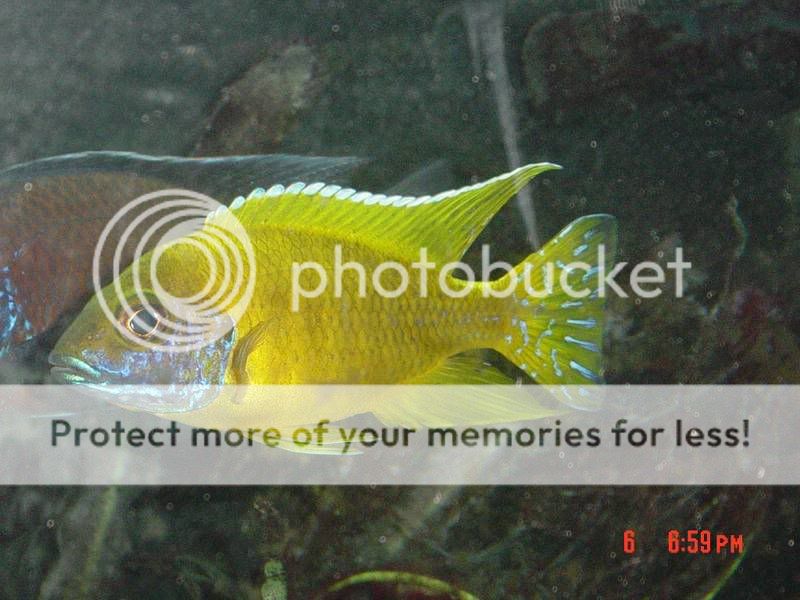 Aulonocara baenschiScientific Name(s): Aulonocara baenschiCommon Name(s):
Aulonocara baenschiScientific Name(s): Aulonocara baenschiCommon Name(s): Sunshine Peacock, Benga Peacock, New Yellow Regal
Origin: Nkhomo Reef, 8 km east of the town of Benga Lake Malawi
Family: Cichlidae
Species Type: Maternal Mouth Brooder
Maximum Size: Male: 5”-6” Female: 3”-4”
Life Span: Approx. 10 yrs.
Natural Habitat: Transitional Zone
Diet: Carnivore. In nature, these fish feed primarily on invertebrates, and the occasional unwary fry. In captivity, a varied diet of high quality flake, pellet, freeze dried, and frozen foods; with occasional feeding of live food (live mosquito larvae are especially relished), will keep them in top condition. They can often be observed sifting through the substrate for invertebrates, so a fine gravel or sand substrate is best. If possible 4 to 6 small feedings (no more than will be consumed in 30 to 45 seconds) is preferable to one or two larger feedings. Multiple small feedings more closely mimic their feeding regiment in nature.
Temperature: 76 – 82 Degrees Fahrenheit
PH: 7.4 – 8.6
Minimum Tank Size: 30 Gallon Long (for a breeding trio)
Tank Region: Mid-Water
Temperament: Peaceful Conspecific: Mildly Aggressive
Possible Tank Mates: Haplochromis, Peacocks, Less Aggressive Mbunas
Filtration and Setup: These fish are found in the transitional zone in the lake. This area tends to be a sandy bottom with scattered rocks and grass-like plants. In the aquarium they will appreciate open areas for swimming with surrounding rockwork. Use of a Coral or Aragonite (calcium carbonate) sand substrate will help maintain the high pH and Hardness these fish prefer. A good quality canister filter and/or a HoB (Hang on Back) filter with high quality mechanical, biological, and chemical media will help keep the water quality to their liking.
Coloration: Dominant Males are a vivid lemon yellow with electric blue gill plates and lower jaw. Juveniles and females are a barred tan/brown.
Breeding: A. baenschi is a maternal mouth brooder in which the female carries the eggs in her mouth until hatching. She will also continue to allow the free-swimming young to take refuge in her mouth until they refuse to return. This species is polygamous, with no lasting pair bonding.
In the aquarium, the male will stake out a territory of approximately one square foot usually centering on a flat rock or cave. If these items are not present, he will dig down to the tank bottom. He will defend this territory from all intruders, with the exception of ripe females. When a prospective mate enters his territory, he will begin a shimmying dance, with flared fins, to attempt to entice her into mating. If she is ready, the will begin the mating dance, in which they will begin circling each other head to tail. During this dance, the female will release several eggs at a time that the male will quickly fertilize. She will then pick the eggs up into her mouth. This dance will continue until she has laid all of her eggs, at which time she will be chased form the male’s territory.
Depending on the temperature, incubation will take between two to three weeks, during which the female will refuse to eat. Once the female has released the fry, she will need to be removed to a separate aquarium to recover, unless there is enough room and hiding places to keep the male from harassing her until she is ready to breed again.
The fry will grow rapidly on a diet of crushed flakes, micro pellets, and frozen baby brine shrimp.
Sub-dominant Male Female
Female







